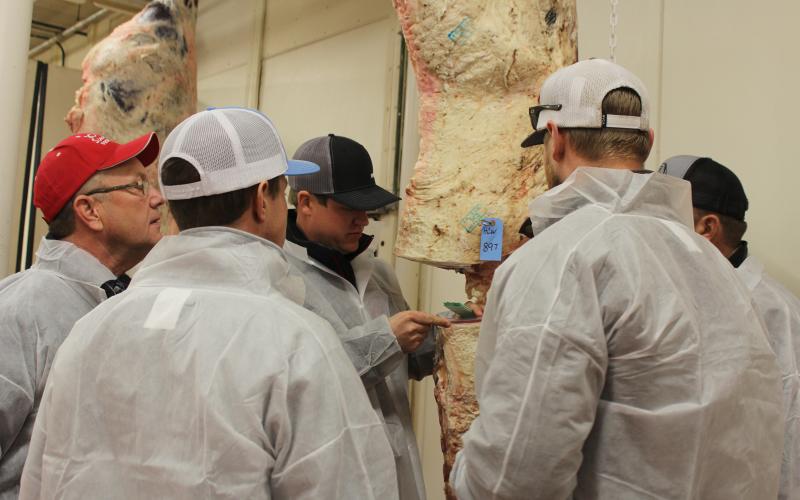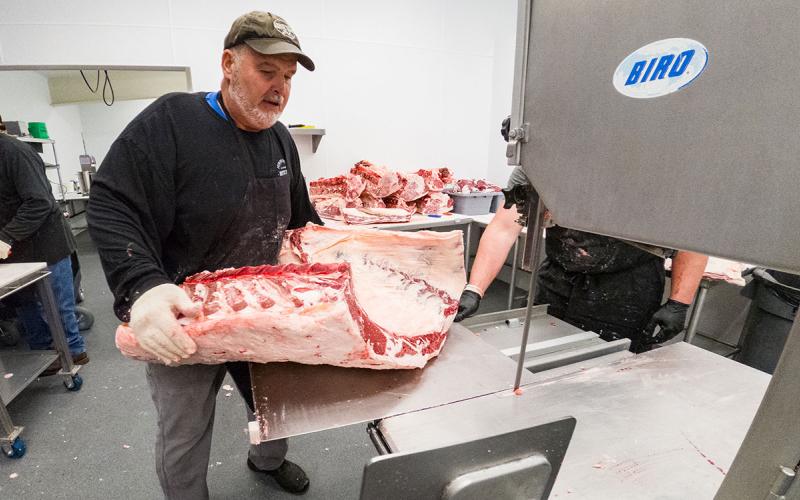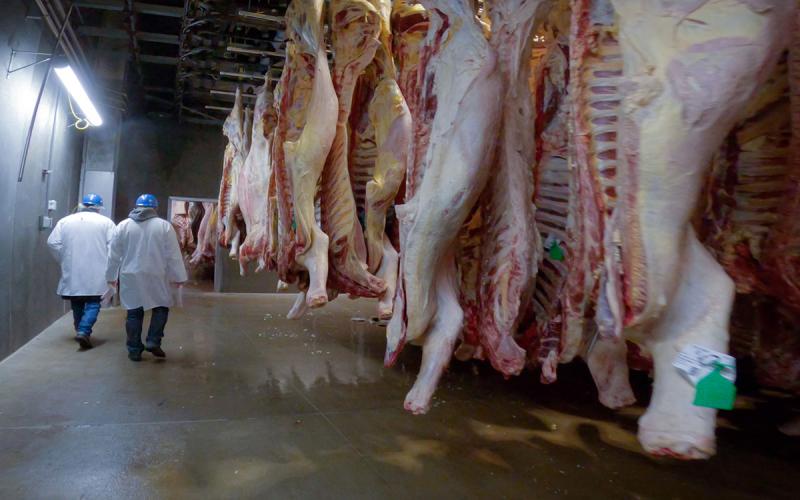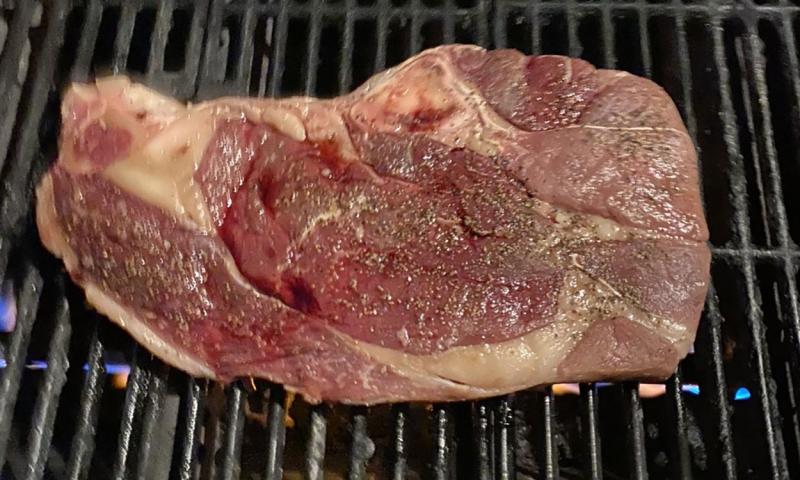
As grilling season is getting into full swing, many grillers are in search of the perfect steak. With so many different options out there, it’s good to have plan before you head out to shop. Type of steak is a personal choice, so if you know your preferences for flavor, tenderness or marbling, that’s a good place to start. If you’re unsure we’ve put together a quick guide for finding the perfect steak to try.
If you want flavor.
Sirloin
One of the most flavorful steak options available is the sirloin (Figure 1). Commonly offered at restaurants and grocery stores alike, the sirloin is a very well-known cut. Depending on where you purchase your steaks, the sirloin can be cut in two very different ways.
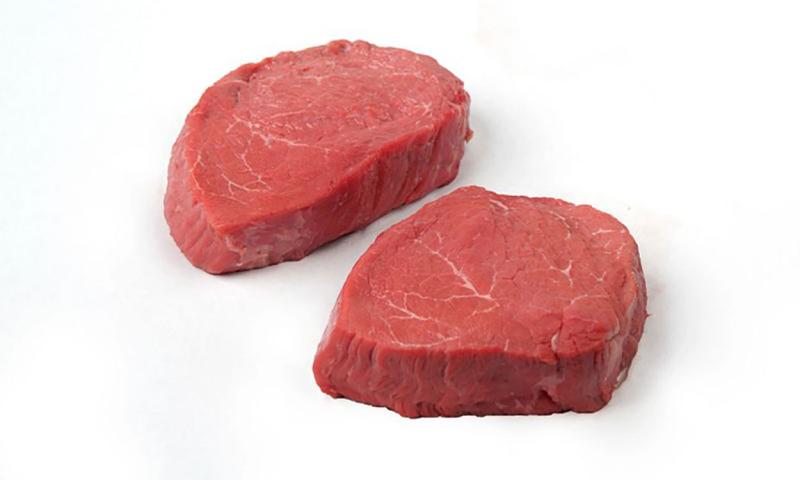
It can be cut across the whole subprimal, resulting in a very large steak that may have several muscles included and may not have a bone in it. These steaks are generally cut to be ½ to 1 inch in thickness and are commonly found in grocery store chains with case-ready products.
The other way a sirloin can be cut is known as the baseball steak (or top sirloin filet). This is where the whole sirloin is divided into three smaller sections, and the steaks are cut thicker, generally 1½ to 2 inches thick (Figure 2). Baseball steaks are what you would most often find in restaurants and grocery stores with service cases.
In the end, these two cutting styles may produce a steak with the same weight, but the baseball steak is more user-friendly, because thicker steaks are harder to overcook.
If you want tenderness.

Tenderloin
Many of the steaks available in grocery stores would fall into the category of acceptable tenderness. However, if you’re looking to go that extra mile for a steak that is fork tender, you can never go wrong with a tenderloin, also called the filet mignon. This is the most-tender cut of meat on the whole beef carcass. But, if you want that extra tenderness, you’re going to have to pay for it. Generally speaking, tenderloin is not only the most-tender cut of meat, but also the most-expensive.
Flat Iron
If you want tenderness but you’re on a budget, the flat iron is a great alternative (Figure 3). Cut from the chuck, the flat iron has become more popular over the past decade as meat processors have discovered this amazingly tender steak in a traditionally tougher area of the carcass. The flat iron is considered the second most-tender cut on the carcass and can cost less than half of the price of a tenderloin. Conveniently, the flat iron can be found in most grocery stores and steakhouses if you’re looking to try something new.
If you want marbling.
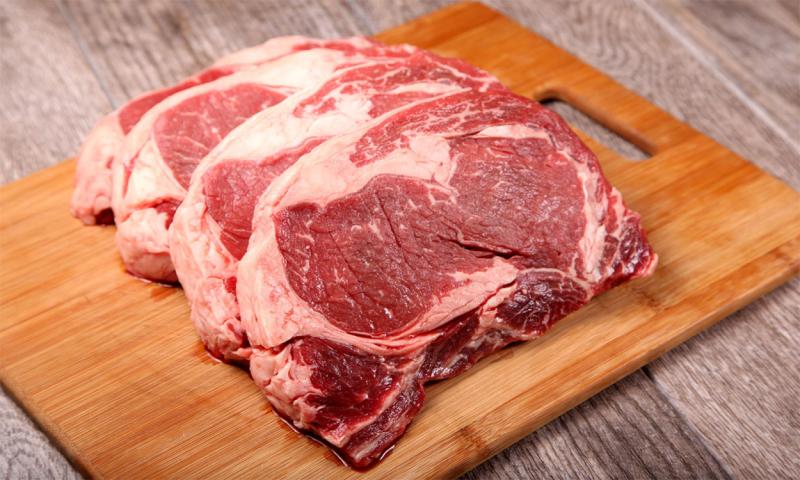
Marbling is the small flecks of fat within the meat and is responsible for increasing the flavor and juiciness of a steak. The amount of marbling determines the quality grade. The USDA beef grades you will typically find in grocery stores or at restaurants are Select, Choice, and Prime, and these are also related to price. Select cuts will have the least amount of marbling and Prime will have the most and will typically be the most-expensive, because research has shown a positive correlation between marbling and the likelihood of a positive eating experience.
Ribeye and New York Strip
Ribeye steaks and New York Strip steaks are commonly the go-to steaks for avid carnivores, because they can be high in marbling, flavorful and acceptably tender.
Chuck Eye Steak
If you love a good ribeye, but don’t love the price, consider purchasing a chuck eye steak, (also called a Delmonico steak) instead. It has the same muscles and qualities of a ribeye at a fraction of the price, because it was cut from the chuck section of this muscle, not the rib section.
Other beef options.
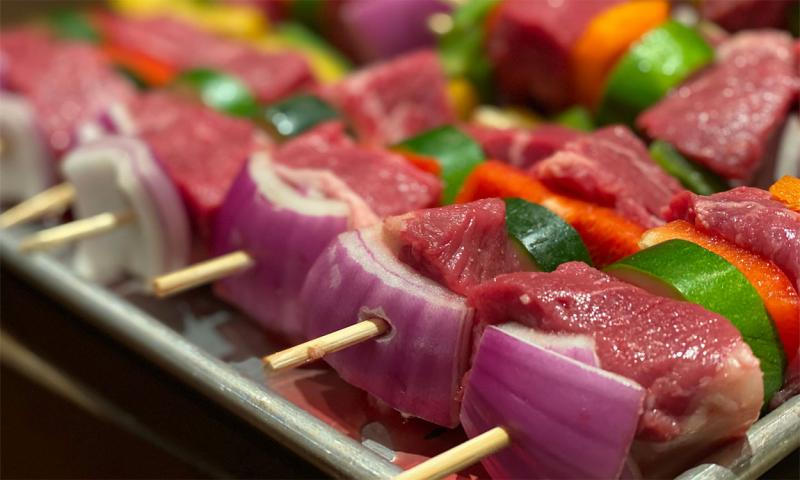
Fajitas and Kabobs
Other popular beef items for summer grilling are fajitas and kabobs. Grocery stores will sell these items, but you can save a little money by cutting them yourself. A sirloin works great for kabobs, since it is a tender, lean cut. For fajitas, try a beef skirt steak or flank steak that you can grill whole and slice thinly across the grain.
Lean Beef
Beef is a great option to add to your diet, because it contributes important nutrients, such as protein, iron and zinc. There are also plenty of lean beef options that can be incorporated into a balanced diet. In fact, there are over 36 cuts that meet the government guidelines for lean. Many popular cuts in the meat case qualify as lean, such as Flank Steak, Tenderloin, T-Bone steak and 95% lean ground beef. A good rule of thumb is to look for the word loin or round in the name, and that usually indicates a lean cut.
Additional Resources
- BBQ Bootcamp: Selecting Cuts of Beef, SDSU Extension
- Summer Grilling Safety Tips, SDSU Extension
- Adding Value to the Beef Carcass: Getting to know the value cuts, SDSU Extension
- Great Beef Recipes, Beef – It’s What’s for Dinner
